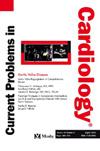Diagnostic accuracy of artificial-intelligence-based electrocardiogram algorithm to estimate heart failure with reduced ejection fraction: A systematic review and meta-analysis
IF 3
3区 医学
Q2 CARDIAC & CARDIOVASCULAR SYSTEMS
引用次数: 0
Abstract
Introduction
AI-based ECG has shown good accuracy in diagnosing heart failure. However, due to the heterogeneity of studies regarding cutoff points, its precision for specifically detecting heart failure with left ventricle reduced ejection fraction (LVEF <40 %) is not yet well established. What is the sensitivity and specificity of artificial-based electrocardiogram to diagnose heart failure with low ejection fraction (cut-off of 40 %. Aims: We conducted a meta-analysis and systematic review to evaluate the accuracy of artificial intelligence electrocardiograms in estimating an ejection fraction below 40 %.
Methods
We searched PubMed, Embase, and Cochrane Library for studies evaluating the performance of AI ECGs in diagnosing heart failure with reduced ejection fraction. We computed true positives, true negatives, false positives, and false negatives events to estimate pooled sensitivity, specificity, and area under the curve, using R software version 4.3.1, under a random-effects model.
Results
We identified 9 studies, including patients with a paired artificial intelligence-enabled electrocardiogram with an echocardiography. patients had an ejection fraction below 40 % according to the echocardiogram. The AI-ECG data yielded areas under the receiver operator of, the sensitivity of), specificity of, and area under the curve of. The mean/median age ranged from 60±9 to 68.05± 11.9 years.
Conclusions
In this systematic review and meta-analysis, the use of electrocardiogram-based artificial intelligence models demonstrated high sensitivity and specificity to estimate a left ventricular ejection fraction below 40 %.

基于人工智能的心电图算法诊断心力衰竭伴射血分数降低的准确性:一项系统综述和荟萃分析。
导读:人工智能心电图在诊断心力衰竭方面具有良好的准确性。然而,由于有关截止点的研究的异质性,其在特异性检测左心室射血分数降低心力衰竭(LVEF)的准确性。目的:我们进行了荟萃分析和系统评价,以评估人工智能心电图在估计射血分数低于40%时的准确性。方法:我们检索PubMed、Embase和Cochrane图书馆,以评估人工智能心电图在诊断射血分数降低的心力衰竭中的表现。在随机效应模型下,我们使用R软件4.3.1版本计算真阳性、真阴性、假阳性和假阴性事件,以估计合并敏感性、特异性和曲线下面积。结果:我们确定了9项研究,包括配对人工智能心电图和超声心动图的患者。超声心动图显示患者射血分数低于40%。AI-ECG数据的接收算子下面积为,灵敏度为,特异性为,曲线下面积为。平均/中位年龄为60±9岁至68.05±11.9岁。结论:在本系统综述和荟萃分析中,使用基于心电图的人工智能模型对估计左室射血分数低于40%具有高灵敏度和特异性。
本文章由计算机程序翻译,如有差异,请以英文原文为准。
求助全文
约1分钟内获得全文
求助全文
来源期刊

Current Problems in Cardiology
医学-心血管系统
CiteScore
4.80
自引率
2.40%
发文量
392
审稿时长
6 days
期刊介绍:
Under the editorial leadership of noted cardiologist Dr. Hector O. Ventura, Current Problems in Cardiology provides focused, comprehensive coverage of important clinical topics in cardiology. Each monthly issues, addresses a selected clinical problem or condition, including pathophysiology, invasive and noninvasive diagnosis, drug therapy, surgical management, and rehabilitation; or explores the clinical applications of a diagnostic modality or a particular category of drugs. Critical commentary from the distinguished editorial board accompanies each monograph, providing readers with additional insights. An extensive bibliography in each issue saves hours of library research.
 求助内容:
求助内容: 应助结果提醒方式:
应助结果提醒方式:


